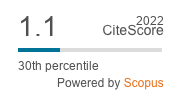Saywaña, amojonamientos y deslindes en Villablanca y Chulluncane: geografía de un conflicto de tierras aimara
DOI:
https://doi.org/10.4067/S0718-34022015000300003Keywords:
Chile, Aymara, Property, Conciliation and Lands ConflictAbstract
Land conflicts in Aymara communities, despite being numerous, have been rarely studied. This article explores the contradictions in land ownership between the communities of Villablanca and Chulluncane, in the altiplano region of Tarapacá, Northern Chile. It also analyzes the symbolic and material dimensions of these territorial disputes, the historic nature of the disagreements and the contributions of geographers and other scientists in understanding them. We focus on issues of geographic demarcations, explaining the concepts of saywaña, demarcation and boundaries used to understand land disputes in the Andes. This concept states that for two hundred years, between the 18th and 19th centuries, during colonial times in the Republic of Peru, no open land disputes occurred between these communities. The territorial disputes broke out with the application of land policy imposed by the Chilean State, which favored the establishment of successive and superimposed titles or deeds, which gave rise to conflicts on Aymara lands.






